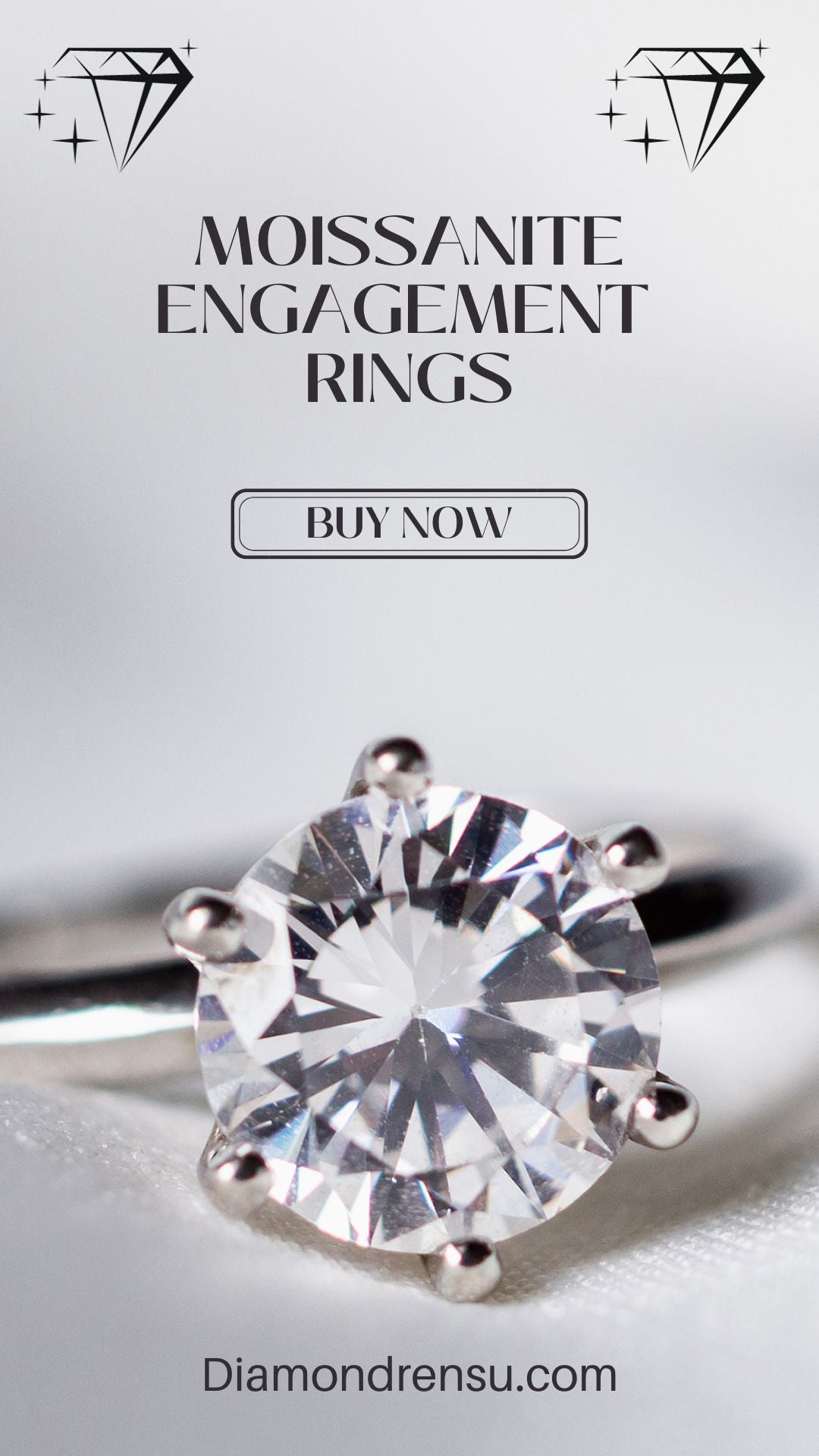
Are I3 Diamonds Real: Understanding the Clarity of Natural Diamonds
When exploring the world of diamonds, you may come across a variety of grades concerning their quality, one of which is the i3 diamond classification. I3 diamonds are indeed real and represent a specific segment in the clarity grading scale established by the Gemological Institute of America (GIA). Clarity is one of the four key characteristics—often referred to as the "Four Cs"—used to evaluate the quality of a diamond. An i3 diamond is categorized at the lower end of this scale, indicating that it possesses numerous inclusions visible to the naked eye.
Table Of Contents
- Understanding Diamond Clarity
- I3 Diamond Clarity Explained
- Impact of Clarity on Brilliance and Sparkle
- Considering I3 Diamonds for Jewelry
- Evaluating Diamond Clarity and Value
- Carat Weight and Clarity Relationship
- Grading and Certifications for I3 Diamonds
- Selecting Diamonds With Inclusions
- Durability Concerns with I3 Clarity Diamonds
- Choosing Settings for I3 Diamonds
- Purchasing Strategies and Considerations
- Alternative Gemstones and Synthetic Options
- Understanding Market Demand and Resale Value
- Conclusion
- Frequently Asked Questions
Understanding the significance of an i3 grade illuminates the market value and aesthetic differences among diamonds. While an i3 diamond will typically have many imperfections, it doesn't negate its status as a genuine diamond. Its availability and affordability make it a consideration for consumers who prioritize size or uniqueness over flawlessness. As with any diamond, appreciating the individuality of an i3 diamond could lead you to find beauty in its distinct characteristics that set it apart from higher-grade stones.
Understanding Diamond Clarity
When you're evaluating diamonds, clarity is a critical quality aspect that describes the presence of inclusions (internal flaws) and blemishes (external imperfections) within and on the surface of a diamond. Each diamond is unique and the clarity can significantly affect its value.
The clarity grade is determined under 10x magnification and ranges from Flawless (FL), with no inclusions or blemishes visible, to Included (I1, I2, I3), where inclusions and/or blemishes are evident and may affect transparency and brilliance.
Here's a quick breakdown of common clarity grades:
- FL, Flawless: No inclusions or blemishes.
- IF, Internally Flawless: No inclusions and only minor blemishes.
- VVS1 and VVS2, Very Very Slightly Included: Inclusions so slight they are difficult for a skilled grader to see.
- VS1 and VS2, Very Slightly Included: Inclusions are observed with effort, but can be characterized as minor.
- SI1 and SI2, Slightly Included: Inclusions are noticeable to a skilled grader.
- I1, I2, I3, Included: Inclusions are obvious and may affect the diamond's durability.
The grades I1, I2, and I3 indicate that a diamond contains inclusions that are visible to the naked eye and could possibly impact the stone's integrity. Even within these grades, I3 is the lowest, often with significant flaws that affect the gem's appearance and structure. However, it's important to note that I3 diamonds are indeed real and can offer an affordable option for those on a budget.
Remember, a higher clarity grade often results in a higher price due to the rarity of nearly-perfect diamonds. It's important to balance clarity with other factors like carat weight, color, and cut to find the diamond that fits your preferences and budget.
I3 Diamond Clarity Explained
| Aspect | Description |
|---|---|
| Clarity Grade | I3 (Imperfect 3) is the lowest clarity grade in the diamond grading scale. |
| Inclusions | Contains noticeable and numerous inclusions and blemishes visible to the naked eye. |
| Nature of Inclusions | Inclusions may include large and prominent internal flaws, impacting transparency and brilliance. |
| Visibility | Inclusions are easily visible without the need for magnification. |
| Impact on Appearance | Significant impact on the overall appearance and sparkle of the diamond. |
| Use Cases | Often used in industrial applications rather than for jewelry due to the low clarity and visible flaws. |
| Price | I3 diamonds are the least expensive due to their lower quality and desirability. |
When you're exploring the world of diamonds, I3 diamond clarity is a term you might encounter. The clarity grade of a diamond refers to the absence of inclusions and blemishes. I3 diamonds, standing for "Included 3", are at the lower end of the clarity scale, which means they contain inclusions that are often visible to the naked eye without magnification.
Inclusions at the I3 clarity level usually have a noticeable impact on a diamond's appearance. They can be such that they affect the transparency and brilliance of the stone. That said, I3 diamonds are indeed real diamonds, despite the presence of these clarity characteristics.
Here are key points about I3 diamond clarity:
- Inclusions: Visible under 10x magnification and typically to the unaided eye as well.
- Eye-Clean: Not applicable, as I3 diamonds are not eye-clean.
- Magnification: While examining with magnification reveals more details about inclusions, I3 diamonds show these features without needing to magnify.
The subsections of diamond clarity range from Flawless (FL) to Included (I3), and here I3 signifies the level where inclusions are prominent and more abundant than in any of the higher clarity grades. Though these diamonds may lack the perfection in appearance of higher-grade diamonds, they are an affordable option for those on a budget.
Understanding I3 clarity will help you make more informed choices about diamond purchases, aligning your expectations with the reality of what these stones offer.
Impact of Clarity on Brilliance and Sparkle
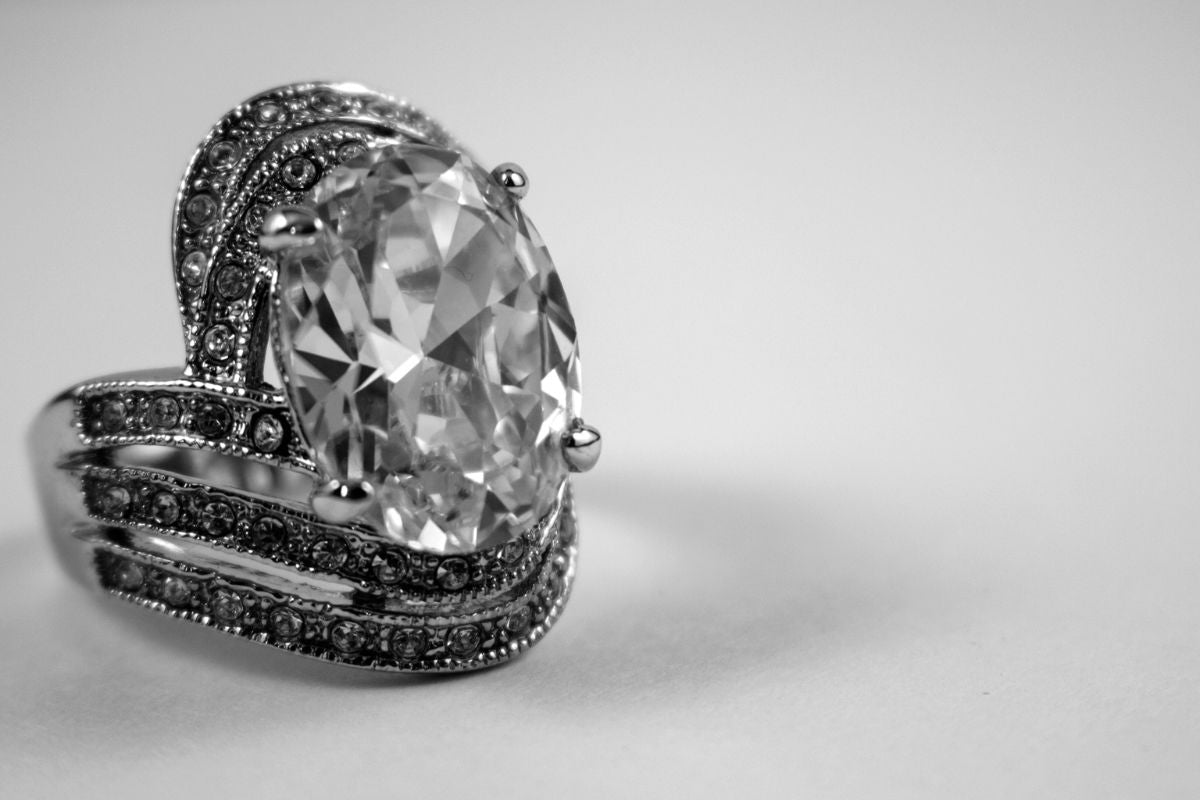
When considering diamond clarity, it's crucial to understand how it can influence the beauty of your diamond, particularly its brilliance and sparkle. Clarity reflects the presence of inclusions and blemishes within or on the surface of a diamond. An I3 clarity grade means the diamond contains significant inclusions that are likely visible to the naked eye and can affect the diamond's optical properties.
Brilliance is the term for the white light that is reflected back to the viewer's eye. In a diamond with higher clarity, light can travel uninterrupted. However, in an I3 diamond, the inclusions can disrupt the path of light, potentially diminishing the light return.
Sparkle, also termed as scintillation, refers to the flashes of light or the dynamic interplay of light and dark areas you see as the diamond, the light, or the observer moves. Inclusions in I3 diamonds can affect this interplay, either by limiting the amount that sparkles or by causing the sparkle to appear duller.
The light performance of a diamond includes both brilliance and sparkle. It's a measure of how effectively a diamond interacts with light, and clarity is a key contributor. An I3 diamond's inclusions can hinder its ability to bend and scatter light, which are essential to its optical performance.
It's important to note that each diamond is unique. While the optical properties of I3 diamonds tend to be less than ideal, some may still present an acceptable sparkle and brilliance. Your personal preference will ultimately determine the balance you seek between clarity and the overall aesthetic appeal of your diamond.
Considering I3 Diamonds for Jewelry
When you're exploring options for jewelry such as an engagement ring or earrings, understanding the quality of the diamonds used, particularly I3 diamonds, is crucial. An I3 diamond is categorized within the lowest clarity grade for diamonds. These stones have noticeable inclusions — imperfections — visible even to the unaided eye.
Attributes of I3 Diamonds:
- Clarity: I3 diamonds contain pronounced inclusions. This impacts transparency and brilliance.
- Price: Typically, these diamonds are more affordable than higher clarity grades.
- Appearance: Inclusions may affect the stone's sparkle, making it less brilliant.
When choosing a diamond, you may want to consider the setting since it can influence the overall look of the jewelry. A strategic setting can enhance the diamond's visual appeal and may help mask some inclusions.
For Engagement Rings:
- Center Stone: I3 diamonds as a center stone could show visible flaws.
- Accents: They can be suitable as accent stones where inclusions are less noticeable.
For earrings, where detailed scrutiny is less likely, I3 diamonds might serve well, especially if you are on a budget and size is a priority over clarity. However, for engagement rings or jewelry where the diamond is often the focal point, considering the clarity is essential. The inclusions in I3 diamonds might detract from the ring's desired aesthetic.
Always inspect the diamond personally or seek high-quality, close-up imagery if buying online. Remember, while I3 diamonds are real and a legitimate choice for jewelry, they do come with compromises, and your personal preferences should guide your decision.
Evaluating Diamond Clarity and Value
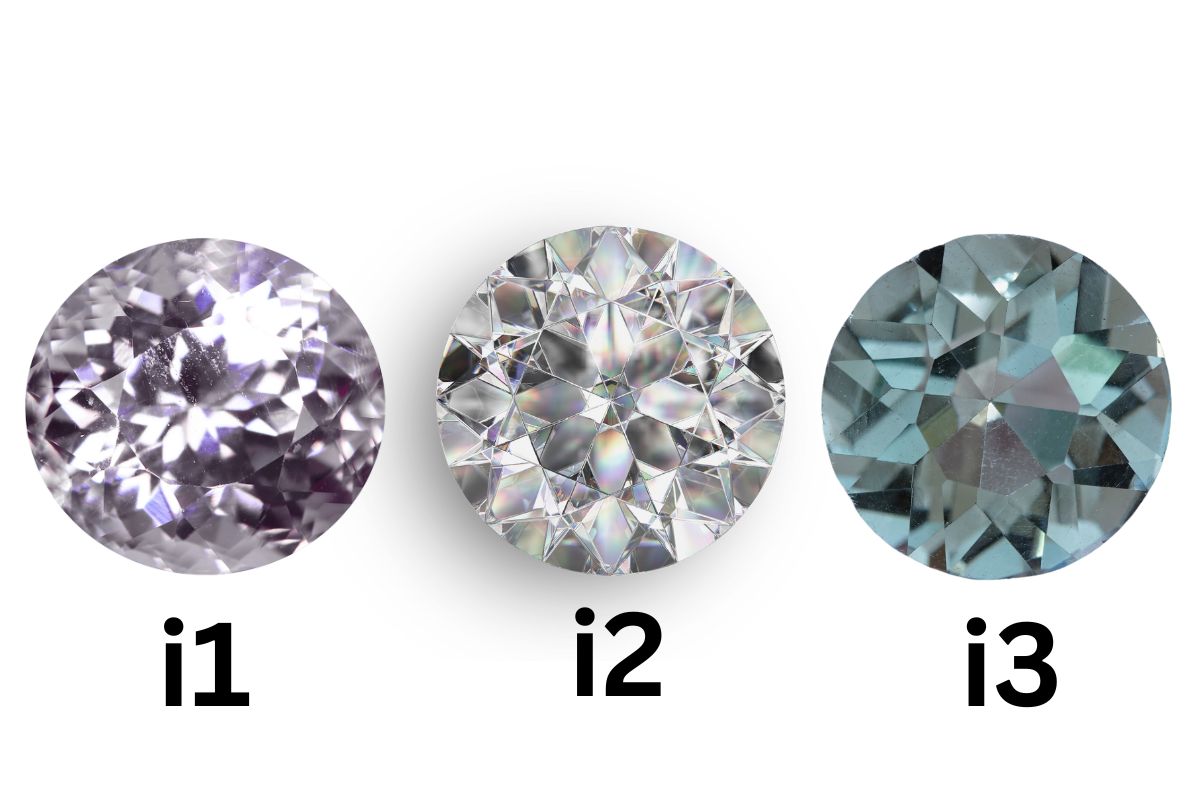
When assessing the clarity of diamonds, you'll find that it significantly influences both the appearance and value. Diamond clarity refers to the absence of inclusions and blemishes. Inclusions are internal characteristics, while blemishes are surface irregularities. The clarity grade ranges from Flawless to Included, with I3 diamonds signifying the lower end of the scale.
I3 diamonds contain inclusions that are visibly noticeable to the naked eye, and these inclusions can sometimes affect the diamond's transparency and brilliance. The clarity scale also includes I1 and I2 diamonds, which have less noticeable inclusions compared to I3 but are still considered lower clarity grades.
Regarding value:
- I1 diamonds: Generally carry a lower price than higher clarity diamonds but can offer value for those wanting a larger stone without a high price tag.
- I2 diamonds: Further reduced in value due to more apparent inclusions, potentially impacting the stone’s appearance.
- I3 diamonds: Often priced significantly lower because of their noticeable inclusions, and their impact on a diamond's appearance can be quite profound.
Your selection between I1, I2, and I3 will depend on what you prioritize: if maximum size for the price is your goal, I1 or I2 might suffice. However, for a balance of clarity and value, carefully examine each diamond to assess how its inclusions affect overall aesthetics. Remember that the pricing of I3 diamonds reflects their lower quality, and they are often chosen for commercial purposes rather than as center stones in fine jewelry.
Carat Weight and Clarity Relationship
When you consider purchasing a diamond, carat weight and clarity are two crucial factors that significantly impact its value and appearance. Carat weight refers to the actual weight of the diamond, with one carat equating to 0.2 grams. This measurement directly affects the size and thus the perceived value of the diamond.
Clarity grade is determined by the absence of inclusions and blemishes. The less there are, the higher the clarity grade and, often, the diamond's value. The Gemological Institute of America (GIA) classifies clarity into several grades, with I3 clarity falling at the lower end of the spectrum. This grade signifies a diamond with noticeable inclusions, which can affect transparency and brilliance.
As your carat weight increases, any clarity imperfections, including those found in I3 clarity diamonds, tend to be more visible. This is because a larger stone provides a greater canvas for these natural characteristics. However, the cut of the diamond can influence how these inclusions affect the stone's brilliance and sparkle. A well-cut diamond can sometimes mask certain clarity issues, although this is less likely with an I3 clarity grade.
In summary, there is an interplay between carat weight and clarity: larger diamonds (higher carat weight) can make inclusions more apparent, which can be a critical consideration if you're looking at diamonds with I3 clarity. Evaluating a diamond clarity chart can give you a better understanding of how clarity grades align with different carat weights. Remember, while a larger carat weight might be desirable, it's essential to balance this with clarity to ensure your diamond meets your expectations for beauty and value.
Grading and Certifications for I3 Diamonds

When you're exploring diamond clarity, you'll encounter various grades that communicate a diamond's level of imperfections. At the lower end of the GIA clarity scale, you find I3 diamonds. "I" stands for "Included," which means these diamonds contain visible inclusions that can affect transparency and brilliance.
Clarity Grading by GIA:
- IF (Internally Flawless): No inclusions and only blemishes visible under 10x magnification
- VVS1-VVS2 (Very Very Slightly Included): Minute inclusions extremely difficult to see at 10x
- VS1-VS2 (Very Slightly Included): Minor inclusions observed with effort under 10x
- SI1-SI2 (Slightly Included): Inclusions noticeable under 10x magnification
- I1-I3 (Included): Inclusions obvious under 10x magnification, which may affect transparency and brilliance
The GIA Clarity Grades:
- Flawless (FL)
- Internally Flawless (IF)
- Very, Very Slightly Included (VVS1, VVS2)
- Very Slightly Included (VS1, VS2)
- Slightly Included (SI1, SI2)
- Included (I1, I2, I3)
I3 diamonds specifically have significant inclusions that are not only apparent under magnification but also often visible to the naked eye. These inclusions can range from internal flaws to surface blemishes and can be sizeable or numerous enough to impact the diamond's overall appearance.
As you consider an I3 diamond, know that it comes with a grading certificate from institutions like the Gemological Institute of America (GIA). This certification gives you a detailed report of the diamond's characteristics, ensuring you're informed about your diamond's clarity and quality.
Despite being real, I3 diamonds are typically less expensive due to their noticeable inclusions, which can diminish their sparkle and appeal. Remember, the GIA grading system is reliable and universally accepted, providing an unbiased assessment of diamond clarity.
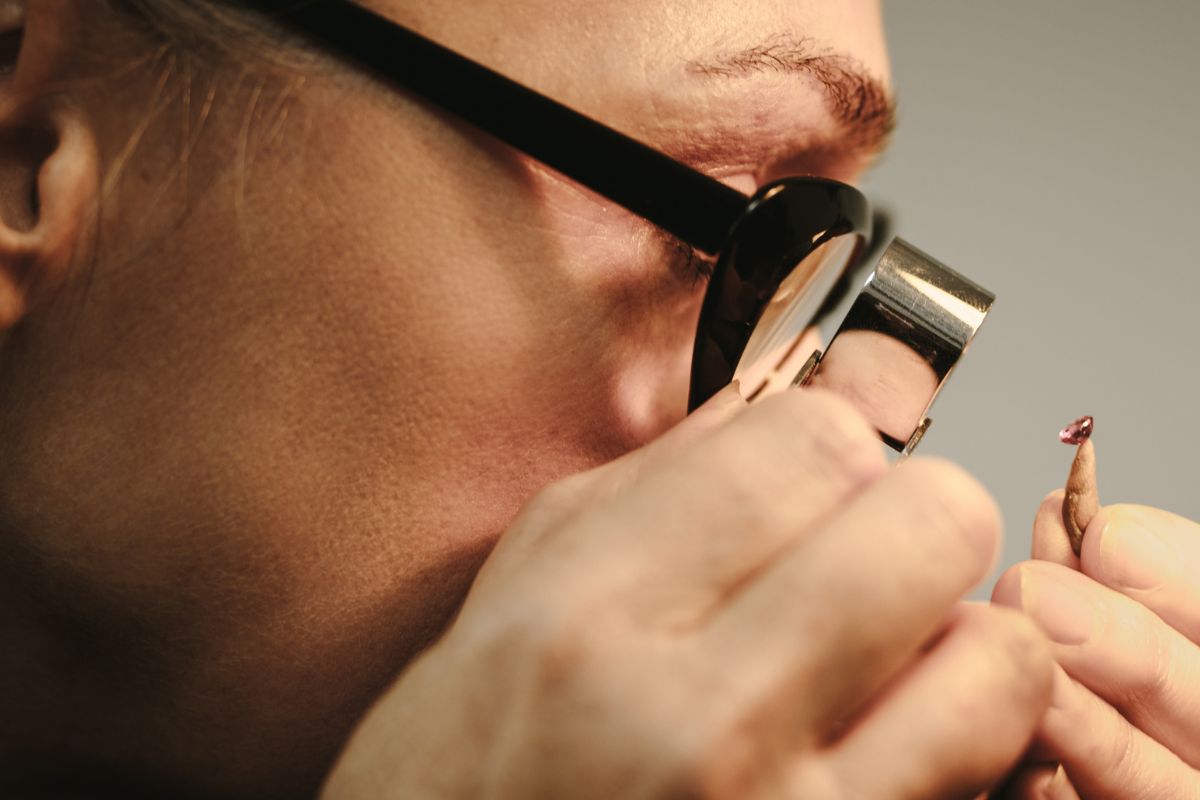
Selecting Diamonds With Inclusions
When choosing a diamond with inclusions, it's crucial to understand the types you may encounter. Inclusions are natural characteristics within a diamond and can range from dark spots to tiny white points. They contribute to the unique fingerprint of every diamond, often making each one a one-of-a-kind gemstone.
In the world of diamond clarity, I3 diamonds are at the lower end of the scale, which means they have inclusions that are typically visible to the naked eye. These may not be ideal if you're looking for a diamond with a high level of transparency. However, especially in salt and pepper diamonds, these inclusions can give the diamond a distinctive look.
When considering an I3 clarity diamond, keep in mind:
- Each inclusion impacts the overall appearance differently.
- Dark inclusions might be more noticeable than white inclusions.
- Diamonds with a speckled appearance, like salt and pepper diamonds, have both black and white inclusions that contribute to their unique aesthetic.
- Evaluate whether the stone is eye-clean; in other words, ensure none of the inclusions are visible to the naked eye when viewed from a normal distance.
- Consider the location and type of inclusion. A central dark inclusion could be more noticeable than one located near the edge or on the underside of the diamond.
Remember, inclusions can affect a diamond's sparkle and durability. Your personal preference should guide your selection, along with consideration for how each inclusion type might impact the overall look and structure of the diamond.
Durability Concerns with I3 Clarity Diamonds
When you consider purchasing an I3 clarity diamond, understanding its durability is crucial. I3, standing for "Included 3", is a clarity grade given to diamonds with noticeable blemishes and inclusions, visible without magnification. These internal and external characteristics can potentially influence the diamond's strength.
Inclusions in I3 diamonds are prominent, and their size, number, and location can make your diamond more susceptible to damage. You should be aware that:
- Chipping: The risk of chipping is higher in I3 diamonds, especially if inclusions are near the edges or at the surface.
- Breaking: Although diamonds are known for their hardness, structural flaws in an I3 diamond can lead to breaking if struck with enough force.
When it comes to daily wear and tear, your I3 clarity diamond requires extra care to maintain its condition. It's not just about aesthetics but also about keeping your diamond intact. Here's what you can do to protect your investment:
- Setting choice: Opt for protective settings, such as bezel or halo designs, which can shield the diamond from direct impacts.
- Regular inspections: Have your diamond checked by a professional to detect any potential issues early on.
- Mindful wearing: Remove your diamond jewelry during activities that could lead to strikes or bumps.
Your I3 diamond can last and maintain its beauty with cautious handling and the right precautions. Remember that while diamonds are forever, they are not indestructible, particularly when it comes to this clarity grade.
Choosing Settings for I3 Diamonds
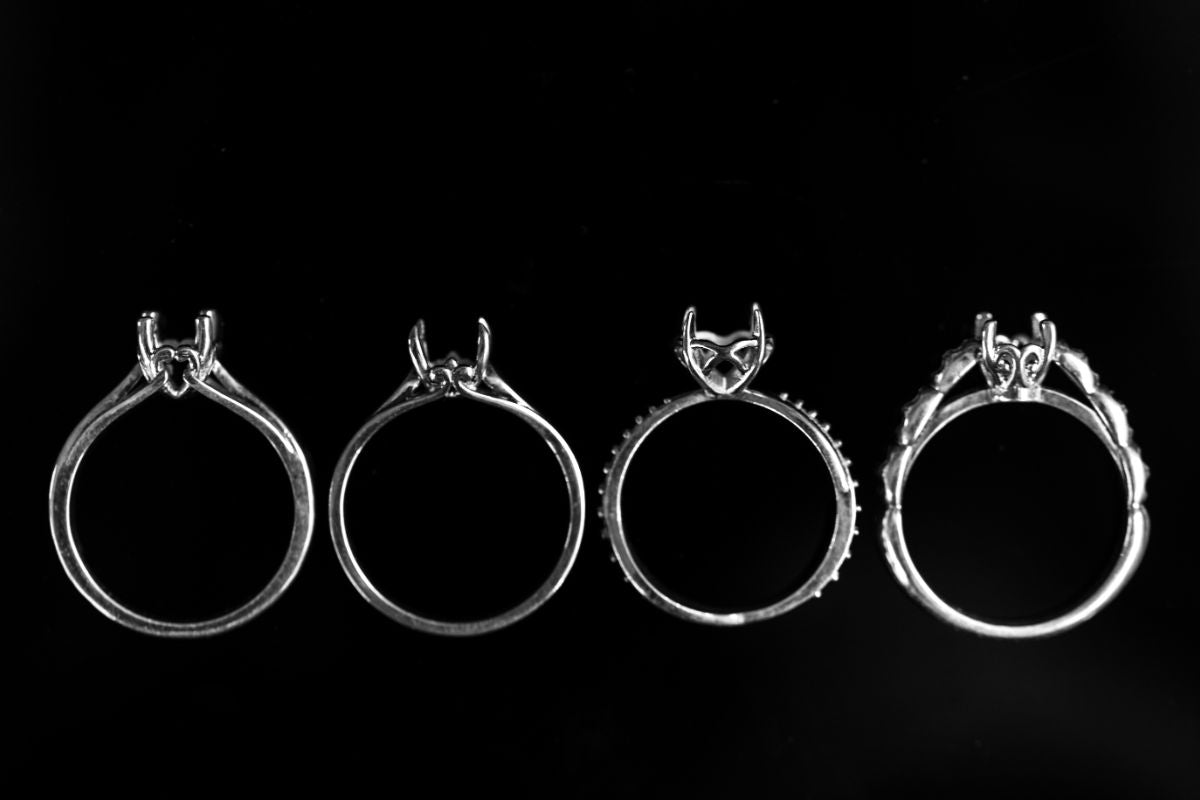
When selecting a setting for your I3 diamond, durability and appearance are paramount. I3 diamonds, classified by their inclusions, require settings that provide protection and enhance their unique beauty.
-
Bezel setting: This surrounds the diamond with a rim of metal, which can hide some inclusions and safeguard edges. For an I3 diamond, a bezel setting not only secures the stone but also creates a smooth, clean look.
-
Halo setting: A halo of smaller diamonds can draw attention away from inclusions and amplify your I3 diamond's presence. It's an ideal choice for an engagement ring that desires a balance between allure and cost-effectiveness.
-
Prong setting: While providing minimal coverage, a prong setting allows maximum light to enter the diamond, enhancing its sparkle. However, for an I3 diamond, consider settings with more prongs to increase stability and mask imperfections.
Remember, your I3 diamond’s appearance can be optimized by choosing the right setting that complements its unique characteristics. It’s not just about the diamond; a thoughtful setting choice is crucial for the piece's overall appeal and longevity. Choose wisely to ensure your engagement ring or piece of jewelry stands the test of time while displaying your diamond at its best.
Purchasing Strategies and Considerations
When you're in the market for an I3 diamond, it's imperative to approach the purchase with a well-crafted strategy that takes into account your budget and the value of the diamond you wish to buy. I3 diamonds are real diamonds but are at the lower end of the clarity scale and are typically priced lower than higher clarity diamonds, offering a way to save money while still purchasing a genuine stone.
Here are some strategies you should consider:
-
Define Your Budget: First and foremost, set a clear budget. Knowing your spending limit is crucial and will guide you in selecting the best I3 diamond within your means.
- Research Online Retailers: Take advantage of online retailers like James Allen, Blue Nile, and Whiteflash. They often offer competitive prices and provide detailed product information.
-
Understand Diamond Value: Be knowledgeable about what an I3 clarity means. These diamonds will have noticeable inclusions and imperfections, which could impact their sparkle.
-
Inspect Through Video: Request high-resolution images or video footage of the actual diamond. This lets you inspect the diamond's clarity and gives a more authentic view of the stone than photos alone.
Utilize this information carefully, keeping your expectations realistic regarding the clarity of I3 diamonds, and remember that you're still purchasing a precious stone.
Alternative Gemstones and Synthetic Options

When considering alternatives to natural I3 diamonds, two notable options come to your attention: lab-grown diamonds and moissanite.
Lab-Grown Diamonds: Lab diamonds are identical to mined diamonds, possessing the same physical, chemical, and optical properties. The only difference between a lab diamond and a natural diamond is its origin. One represents a choice stemming from technological advancements while the other is a gift from geological processes.
- Cost: Often more affordable than their mined counterparts.
- Ethics: Tend to have fewer ethical dilemmas associated with their production.
- Variety: Available in various sizes, shapes, and grades.
Moissanite: Moissanite is a gemstone originally found in meteorites. It is nearly as hard as diamond and more brilliant due to its higher refractive index. Although not a carbon crystal, it’s an excellent diamond look-alike.
- Durability: Exceptionally durable, ranking 9.25 on the Mohs scale.
- Brilliance: Notable for its fire and radiance.
- Price: Typically less expensive than both lab and mined diamonds.
Here's a brief comparison:
While exploring gems and gemstones, consider these synthetic options as they offer beauty and durability akin to I3 diamonds but with their own unique benefits. Whether you're looking for an ethical choice or seeking the best value for your budget, these alternatives merit your consideration.
Understanding Market Demand and Resale Value
When you're considering purchasing i3 diamonds, it's important to understand where they fit on the diamond clarity scale and how this affects their market demand and potential resale value. Clarity is a vital characteristic that defines the purity and brilliance of a diamond.
The GIA clarity scale classifies diamonds from Flawless (FL) to Included (I3), with i3 diamonds having noticeable inclusions that are often visible to the naked eye. Despite these inclusions, i3 diamonds are real diamonds and are part of a legitimate market segment catered to budget-conscious consumers.
Demand for i3 diamonds exists because they offer a more affordable entry point into diamond ownership. However, when it comes to resale value, be aware that they typically do not retain value like higher clarity diamonds do. This is because the resale market values diamonds on rarity and quality, factors where i3 diamonds are lower on the scale.
Here's a brief overview:
- Market Entry: i3 diamonds provide an affordable option for consumers.
- Clarity: Ranked lowest on the clarity scale with visible inclusions.
- Demand: Steady among budget buyers, but less sought after by premium purchasers.
- Resale Value: Generally offers lower resale value due to lower clarity rating.
Your understanding of these aspects is crucial if you're contemplating an i3 diamond purchase. Remember that while you may be compromising on clarity, you're gaining in initial cost savings, which might align with your immediate goals. However, these diamonds may not be the best choice if you're considering long-term investment potential.
Conclusion
When evaluating the authenticity of I3 grade diamonds, you must understand that the term real refers to natural origin rather than synthetic creation. I3 diamonds are indeed real diamonds; they're categorized at the lower end of the clarity scale due to their noticeable inclusions. These characteristics define their appearance and can affect their sparkle, yet they remain a genuine product of nature.
Your perception of diamond quality should accommodate the reality that all diamonds, including those with an I3 clarity grade, are formed over billions of years under high pressure and temperature. It's this natural process that makes each diamond, irrespective of its clarity, a true wonder.
Given the evidence from the market, it's clear that while I3 diamonds may not be the first choice for investment or hedging against economic uncertainties, they possess a uniqueness that can be appealing for specific jewelry purposes. They offer an affordable alternative to higher-grade diamonds, making genuine diamond jewelry accessible to a wider audience.
If you're considering purchasing an I3 diamond, prioritize factors such as the stone's overall beauty and how its imperfections contribute to its unique character. Remember, the value of a diamond is not solely dictated by its clarity but also by the joy and meaning it brings to its wearer.
Frequently Asked Questions
When considering I3 diamonds, you likely have questions regarding their value, quality, and investment potential. Understanding these aspects will help you make informed decisions.
What determines the value of I3 diamonds?
The value of I3 diamonds is influenced by the presence of noticeable inclusions or blemishes that are visible to the naked eye, often affecting the diamond's brilliance and transparency.
How do I3 clarity diamonds compare to VS2 clarity diamonds?
I3 clarity diamonds have more and larger inclusions than VS2 clarity diamonds, which are only detectable under 10x magnification, making VS2 diamonds a higher quality and more expensive option for consumers.
What are the characteristics of I3 diamond clarity?
I3 diamond clarity signifies diamonds with evident inclusions that can potentially influence durability and are usually detectable without magnification, affecting the diamond's overall appearance.
Can I3 diamonds be a worthwhile investment?
While I3 diamonds are more affordable, they tend to retain less value over time compared to higher clarity grades, making them a less attractive option for investment purposes.
What is the typical price range for a 1 carat I3 diamond?
The price for a 1 carat I3 diamond varies widely, but they are generally the most budget-friendly option in the diamond clarity scale, with prices significantly lower than those of higher clarity grades.
How does the I2 diamond clarity grade differ from I3?
I2 diamonds typically have fewer and smaller inclusions than I3 diamonds, making them a step up in terms of clarity, though both grades contain inclusions that are apparent without magnification.
Checkout some of our top collections:

